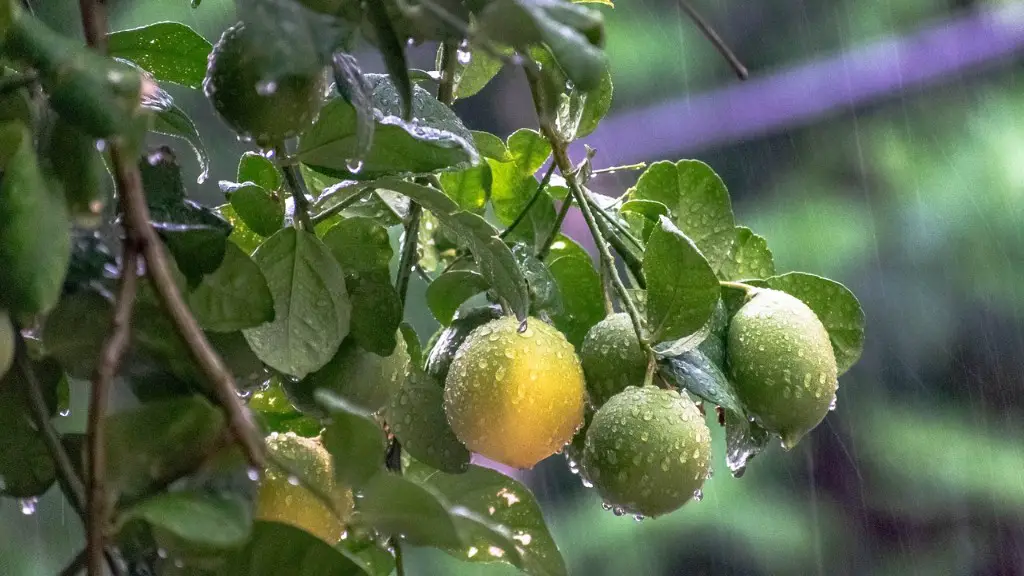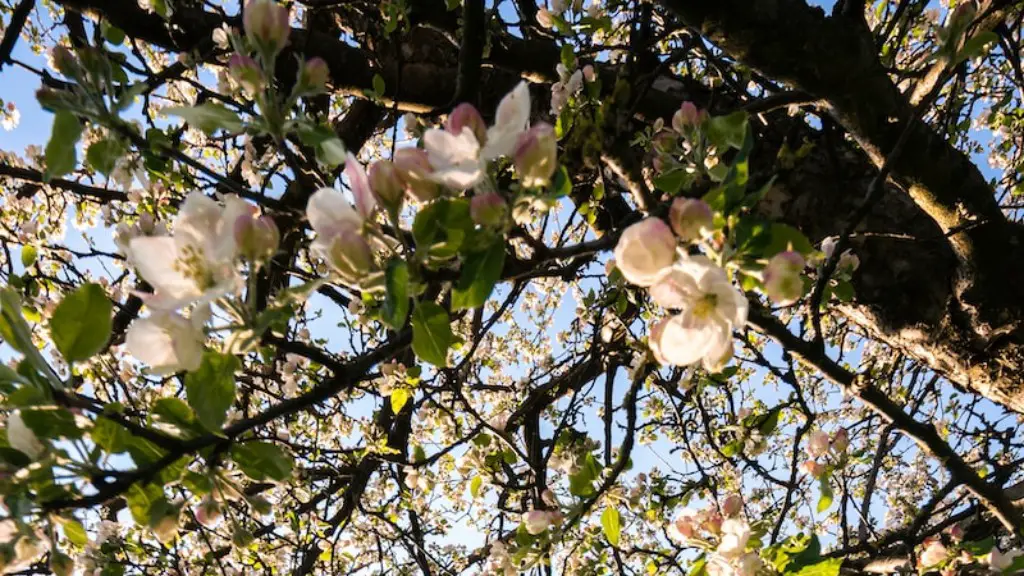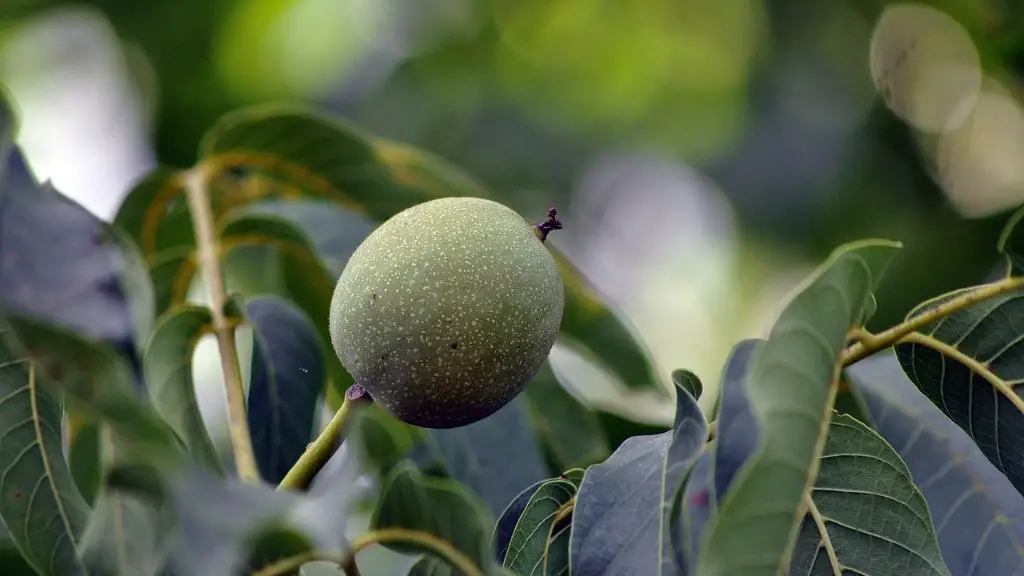Learning how to clean lemon tree leaves is an essential part of their maintenance. If you’ve been blessed with a lemon tree in your garden, it’s important to understand how to keep its leaves healthy. This basic maintenance can go a long way towards ensuring your lemon tree produces plenty of delicious lemons.
Firstly, choose a day with no wind, or it may be difficult to clean the leaves properly. Remove any large leaves that may have detached from the tree, to avoid them becoming a breeding ground for pests or diseases. Once these have been safely disposed of, you’re ready to clean the remaining leaves.
You’ll need gentle cleaning products, such as a mild detergent, a bucket of warm water, and a sponge or soft cloth. Start by gently washing the lemon tree leaves with the sponge, using a small amount of the mild detergent. It’s important to only use a tiny bit of detergent, as too much may burn the leaves. Work carefully and avoid rubbing too hard – you don’t want to damage the leaves.
Once all of the leaves have been washed, rinse them off with clean water. Be sure to dab them with the cloth to remove any cleaning residues. Finally, dry the leaves and the trunk of the lemon tree thoroughly – you can do this by wiping them down with a towel. This will help protect the tree from fungal diseases.
The last step is to treat the leaves with a citrus spray, to help give them a glossy finish. Do this once a month, and your lemon tree will thank you in return by providing delicious, juicy lemons!
Cutting and Pruning
Cutting and pruning lemon tree leaves is an important part of the maintenance process. Trimming any dead leaves, branches or fruits will help keep it healthy, and prevent the spread of possible diseases. Start by using shears or scissors to remove any dead leaves. It’s also a good idea to prune any shoots or branches that are diseased, as this will improve air circulation around the tree.
When pruning larger branches and shoots, it’s important to make sure you use the correct technique. This will help reduce the risk of damage, and make sure your lemon tree stays healthy. Start by cutting a foot away from the trunk, and then work your way back. Don’t forget to prune the tips of the branches and shoots – this will help promote healthy growth.
After finishing your pruning, it’s important to dispose of the clippings safely. Place the clippings in a bin with a lid, or compost them if possible. This will help prevent any diseases in your lemon tree from spreading further. Make sure you don’t throw the clippings on the ground, as that could risk infecting other plants.
Cleaning After Pests or Diseases
It’s important to keep a close eye on your lemon tree, as pests and diseases can often be difficult to spot straight away. If you do notice any pests or diseases, fast action can help to stop them in their tracks. Start by using an appropriate insecticide or fungicide to treat the affected area. Follow the instructions carefully, and avoid overusing any products.
Once the insecticide or fungicide has been applied, it’s important to clean the tree. This will help make sure any remaining pests or diseases are removed. Start by gently wiping the lemon tree leaves with a soft cloth. If necessary, use a mild detergent mixed with warm water. Be sure to rinse the leaves off after cleaning, and make sure you dry them thoroughly.
If necessary, consider treating the tree with a protective spray, to help prevent future attacks. Ask your local garden store to recommend a suitable spray, and follow the instructions closely. You should also continue to inspect the tree on a regular basis, as this will help you spot any changes as soon as possible.
Watering Tips
It’s important to get your watering schedule right if you’d like to keep your lemon tree healthy. Too much or too little water can both lead to unhappy plants, so it’s important to find the right balance. Start by ensuring your lemon tree is planted in a suitable area, with good drainage. This will help make sure the roots can access the water they need.
When it comes to watering, aim for medium amounts on a regular basis. Avoid watering the tree too deeply too often – this can cause the roots to rot, and deprive them of oxygen. You could also use a water meter to make sure you’re not overwatering. As a general rule of thumb, stick to your garden’s local schedule, and water regularly.
You could also consider designing a drip irrigation system. A drip irrigation system is set up so that the water is released slowly and evenly, helping the lemon tree access the water it needs over a period of time. This will make sure the water is reaching all areas of the tree, including the roots.
Finally, use mulch around the base of the lemon tree. Mulch will help the soil to stay moist, and limit any evaporation from happening. This will also help create an even temperature around the tree, which will improve its health.
Fertilizing Tips
It’s also essential to fertilize your lemon tree, to help it get all of the nutrients it needs. Start by testing the soil, to make sure it isn’t too alkaline or acidic. Your local garden store should be able to test the soil for you, and recommend the right fertilizer to use.
Once you’ve sourced the right fertilizer, carefully read the instructions to make sure you’re using it correctly. If the instructions tell you to dilute it with water, make sure you do so properly. When you’re ready, carefully spread the fertilizer around the base of the lemon tree, avoiding direct contact with any flowers or fruit.
Aside from applying fertilizer, you can also give your lemon tree a boost of nutrients by making use of compost. Compost can add valuable nutrients to your soil, improving the health of your lemon tree, as well as its flowers and fruits. Make sure you spread the compost evenly in a circular pattern, and water the soil regularly.
Finally, consider adding some grit to your soil, as this will help to improve its structure. This will help to reduce drainage problems in the soil, and help your lemon tree access more nutrients. Try not to add too much though – a few handfuls should be enough to do the trick!
Winter Maintenance
When winter hits, it’s important to prepare your lemon tree for the cooler weather. Start by wrapping the trunk of the tree in some kind of insulation, such as burlap or bubble wrap. This will help to protect the trunk from low temperatures, and also prevent any frost damage.
You should also consider pruning the branches of the tree. Trim back any overhanging branches, as this will help keep the tree warm, limiting any potential damage from the cold. Make sure you don’t trim back too much though, as this could limit the tree’s growth in future.
It’s also a good idea to evaluate the soil and check if it’s too wet. If it is, try to allow any excess water to drain away by introducing some drainage channels. Also, make sure you don’t prune or plant any new trees during winter, as this can leave them open to damage from frost.
Finally, check the tree regularly during winter, and look out for any signs of distress. The bark may crack, the foliage may yellow, and the fruit may ripen earlier. Don’t panic if you notice any of these symptoms – just take the necessary steps to protect your lemon tree.





